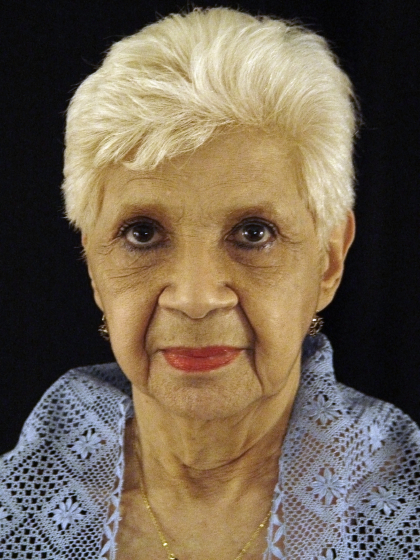Tradition Artisan


- Accordionist
- Advocate
- Appalachian
- Artisan
- Ballads
- Bandleader
- Banjo Player
- Basketmaker
- Beadworker
- Bess Lomax Hawes Award
- Blacksmith
- Bluegrass
- Blues
- Boatbuilder
- Cajun
- Capoeira Angola
- Ceramicist
- Clarinetist
- Composer
- Conjunto
- Creole
- Cuatro Player
- Dancer
- Dobro Player
- Drum Maker
- Drummer
- Egg Decorator
- Embroiderer
- Fiddler
- Flute Player
- Gospel
- Guitarist
- Hardanger
- Harmonica
- Hula
- Instrument Maker
- Kathak
- Klezmer
- Lace Maker
- Lindy Hop
- Luthier
- Mandolin Player
- Mardi Gras Chief
- Mask Maker
- Metalsmith
- Multi-Instrumentalist
- Musician
- Needleworker
- Ornamental Ironworker
- Oud Player
- Pianist
- Poet
- Polka
- Potter
- Prim Player
- Quillwork
- Quilter
- Regalia Maker
- Rosemaler
- Saddle Maker
- Santero
- Scholar
- Sephardic
- Shaker
- Shape Note
- Singer
- Skin Sewer
- Slack Key
- Snowshoe Designer and Builder
- Songster
- Songwriter
- Spiritual/Shout Performers
- Spoken Word
- Steel Drum
- Step Dancer
- Stick Dancer
- Stone Carver
- Storyteller
- Straw Appliqué Artist
- Straw Artist
- String Band
- Swamp Blues
- Tamburitza
- Tap
- Tea Ceremony Master
- Tejano
- Toissan muk'yu Folk Songs
- Tradition Bearer
- Trombonist
- Uillean Piper
- Ukulele Player
- Violinist
- Weaver
- Western
- Western Swing
- Wood Carver
- Work Songs
- Yiddish
- Yoruba Orisha
- Zydeco
Artist Rosa Elena Egipciaco


- Yacub Addy
- Juan Alindato
- Eppie Archuleta
- Eldrid Skjold Arntzen
- Celestino Avilés
- Horace P. Axtell
- Earl Barthé
- Kepka Belton
- Earnest Bennett
- Mozell Benson
- Nicholas Benson
- Mary Holiday Black
- Lila Greengrass Blackdeer
- George Blake
- Alice New Holy Blue Legs
- Loren Bommelyn
- Laverne Brackens
- Jerry Brown
- Em Bun
- Bruce Caesar
- Dale Calhoun
- Alfredo Campos
- Genoveva Castellanoz
- Bounxou Chanthrapone
- Nicholas and Elena Charles
- Betty Piso Christenson
- Delores E. Churchill
- Gladys LeBlanc Clark
- Bertha Cook
- Helen Cordero
- Burlon Craig
- Rose and Francis Cree
- Belle Deacon
- Amber Densmore
- Bo Dollis
- Sonia Domsch
- Rosa Elena Egipciaco
- Nora Ezell
- Rose Frank
- Mary Mitchell Gabriel
- Sophia George
- Pat Courtney Gold
- José González
- Ulysses "Uly" Goode
- LeRoy Graber
- Gladys Kukana Grace
- Frances Varos Graves
- Sister Rosalia Haberl
- Charles E. Hankins
- Georgia Harris
- Dale Harwood
- Gerald R. Hawpetoss
- Evalena Henry
- Bea Ellis Hensley
- Mary Jackson
- Nathan Jackson
- Nettie Jackson
- Meali'I Kalama
- Clara Neptune Keezer
- Maude Kegg
- Agnes "Oshanee" Kenmille
- Norman Kennedy
- Bettye Kimbrell
- Don King
- Ethel Kvalheim
- Esther Littlefield
- George López
- Ramón José López
- Jeronimo E. Lozano
- Mary Jane Manigault
- Miguel "Mike" Manteo
- Sosei Shizuye Matsumoto
- Eva McAdams
- Marie McDonald
- Lanier Meaders
- Leif Melgaard
- Nellie Star Boy Menard
- Elmer Miller
- Gerald "Subiyay" Miller
- Allison "Tootie" Montana
- Vanessa Paukeigope Morgan
- Genevieve Mougin
- Mabel E. Murphy
- John Naka
- Grace Henderson Nez
- Yang Fang Nhu
- Luis Ortega
- Nadjeschda Overgaard
- Vernon Owens
- Julia Parker
- Elijah Pierce
- Konstantinos Pilarinos
- Hystercine Rankin
- Georgeann Robinson
- Eliseo and Paula Rodriguez
- Teri Rofkar
- Emilio and Senaida Romero
- Herminia Albarrán Romero
- Emilio Rosado
- Mone and Vanxay Saenphimmachak
- Losang Samten
- Duff Severe
- Harry V. Shourds
- Philip Simmons
- Eudokia Sorochaniuk
- Dolly Spencer
- Ralph W. Stanley
- Alex Stewart
- Nancy Sweezy
- Margaret Tafoya
- Jennie Thlunaut
- Ada Thomas
- Dorothy Thompson
- Paul Tiulana
- Lucinda Toomer
- Ezequiel Torres
- Nicholas Toth
- Irvin L. Trujillo
- Dorothy Trumpold
- Lily Vorperian
- Lem Ward
- Newton Washburn
- Gussie Wells
- Francis Whitaker
- Arbie Williams
- Yuqin Wang and Zhengli Xu
- Paul and Darlene Bergren
- Harold A. Burnham
- Molly Neptune Parker


















